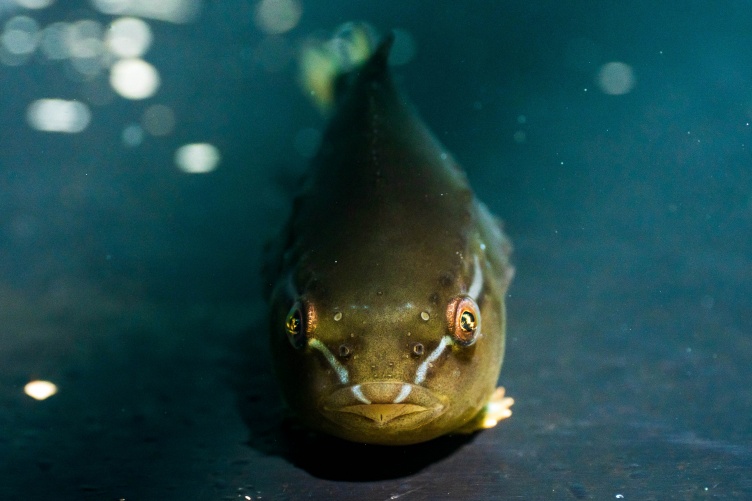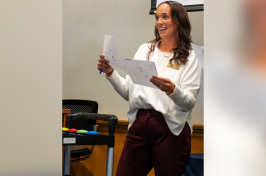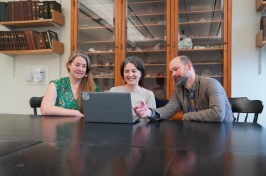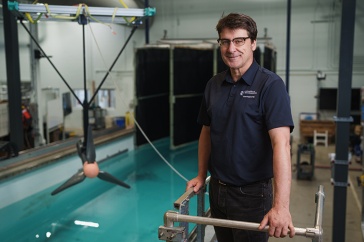
One NOAA grant will develop a broodstock for lumpfish, which can keep salmon in aquaculture pens clean. Photo by Tim Briggs.
Three UNH research projects aim to improve sustainability of the region’s fishing and aquaculture industries and bring better seafood to the table, thanks to funding from the National Oceanic and Atmospheric Administration’s Saltonstall-Kennedy grant program.
With a grant of $297,720, research associate professor of marine biology Elizabeth Fairchild and aquaculture Extension specialist Michael Chambers will lead research to develop a broodstock program for lumpfish, a species native to the Gulf of Maine. Lumpfish are “cleaner fish;” when integrated into salmon and steelhead trout farms, they delouse the farmed fish. While U.S. salmon farmers would like to use lumpfish, much like north Atlantic salmon farms outside the U.S. do already, neither a domestic lumpfish source nor established permitting exist.
Fairchild and Chambers, along with NH Sea Grant aquaculture program manager Arron Jones and Heather Hamlin of the University of Maine, will study lumpfish as a broodstock and conduct outreach with stakeholders on using them in aquaculture.
“This could lead to new business opportunities and increase domestic production of Atlantic salmon and steelhead trout,” says Chambers. “The fishing community would have a new, high-value opportunity to supply live, adult, wild lumpfish to broodstock facilities.”

Fairchild also received funding ($296,886) for a second project that will improve the sustainability of the lucrative channeled whelk fishery in the northeast. These large sea snails with their iconic “hear the ocean” shells are caught in traps, much like lobsters, with a bait blend that has traditionally included horseshoe crab, an exploited species in jeopardy.
“We propose to work with the whelk industry to develop more sustainable and environmentally-friendly products: traps that allow the escape of whelks that do not meet the minimum legal size, and an effective bait that utilizes less horseshoe crab and more low-cost, low-impact ingredients such as invasive green crabs,” says Fairchild.

A third project, led by Jason Goldstein ‘12G of the Wells National Estuarine Research Reserve in Maine, aims to jump-start an economically viable green crab fishery by better understanding when the invasive crabs are about to molt. UNH fisheries Extension specialist Gabriela Bradt and assistant professor of biological sciences Nathan Furey are also participating in the research.
Highly invasive, green crabs pose significant concerns to established fisheries as well as ecosystems. Bradt and others have championed an “eat the invaders” approach by partnering with local chefs, but not knowing when and where green crabs molt (and become soft-shelled) hinders the potential success of a green crab fishery. Furey’s lab will contribute telemetry expertise to track the seasonal movements of green crabs along the coast.
The three projects are among 30 projects nationwide that received a total of more than $8 million from the 2020 Saltonstall-Kennedy Grants Program.
-
Written By:
Beth Potier | UNH Marketing | beth.potier@unh.edu | 2-1566






















































